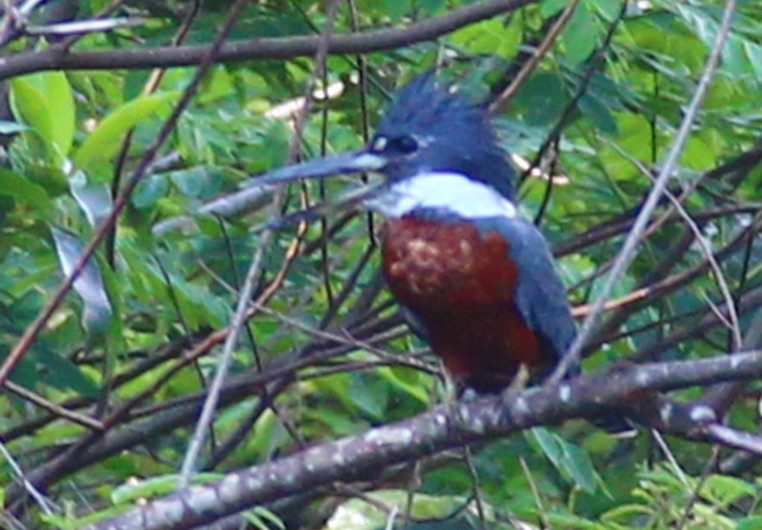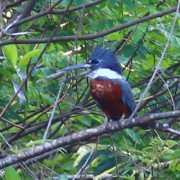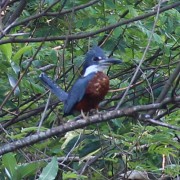Biodiversity
 Ringed Kingfisher
Megaceryle torquata | Linnaeus, 1766
Ringed Kingfisher
Megaceryle torquata | Linnaeus, 1766

Vocalization

Characterization: Medium-sized species measuring about 42cm in length. Unmistakable for its large size and huge beak (8cm), this bird has blue plumage on its upper parts, a rufous colored belly, and a clearly visible white "collar." The male also has a rufous chest, but the female's chests have a dark and a white stripe.
Distribution: In tropical and subtropical areas, ranging from Tierra del Fuego to Alaska.
Habitat: Near dams, ponds, reservoirs, streams, mangroves, and the sea.
Habits: A diurnal, aquatic species, solitary most of the time.
Diet: Carnivorous, feeding mainly on fish and butterflies, wasps, winged ants, small beetles, cicadas, and dragonflies.
Breeding: It lays 2-4 eggs in nests built on embankments or rocks. The couple takes turns every 24 hours in building the long, winding galleries their nests consist of.
In the UFRA area: This species of bird was present in 6 of the 10 studied habitats. They were seen in wetlands with herbaceous plants, wetlands with riparian forests, restored native forests, native forests, drainage ditches, and woods in spontaneous regeneration. It is considered little frequent, as it was spotted only 14 times.





